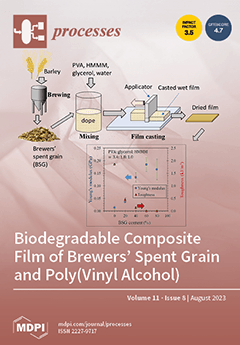The Lower Permian Fengcheng formation is a significant source of rocks and a reservoir for the Mahu Sag in the Junggar Basin. Recently, the paleo-environment deposition factors of the P
1f formation have become a popular research topic. This research was conducted
[...] Read more.
The Lower Permian Fengcheng formation is a significant source of rocks and a reservoir for the Mahu Sag in the Junggar Basin. Recently, the paleo-environment deposition factors of the P
1f formation have become a popular research topic. This research was conducted using data from the F7 well of Mahu Sag, based on the geochemical analysis results of TOC (total organic carbon), REE (rare earth elements), and major and trace elements of 53 samples from P
1f (Lower Permian Fengcheng formation), and some deposition factors are discussed. The P
1f deposition process was classified into four stages based on paleo-environment elemental indicators. This research describes the deposition process of the evolution of alkaline lakes. The early and preliminary stages of alkali lake evolution are considered as late P
1f1 to middle P
1f2; the paleoclimate of this process was dry, the reduction conditions increased, and the paleo-productivity and lake salinity were enhanced. The terminal stage of alkali lake evolution is considered as late P
1f2 to middle P
1f3; in this period, the paleoclimate changed with seasonal cycles, resulting in a decrease in water salinity and an increase in oxidation; the paleo-productivity of the alkaline lake was at a medium level. Until the end of P
1f3, the salinity of the lake decreased, and the water body became anoxic and weakly alkaline. Furthermore, the research on TOC and sedimentary parameters confirmed that the deposition of P
1f organic matter is affected by multiple types of factors. A relatively warm climate, lack of oxygen, fresh water–brackish water, suitable debris flow, and high primary productivity conditions promoted organic matter deposition.
Full article





